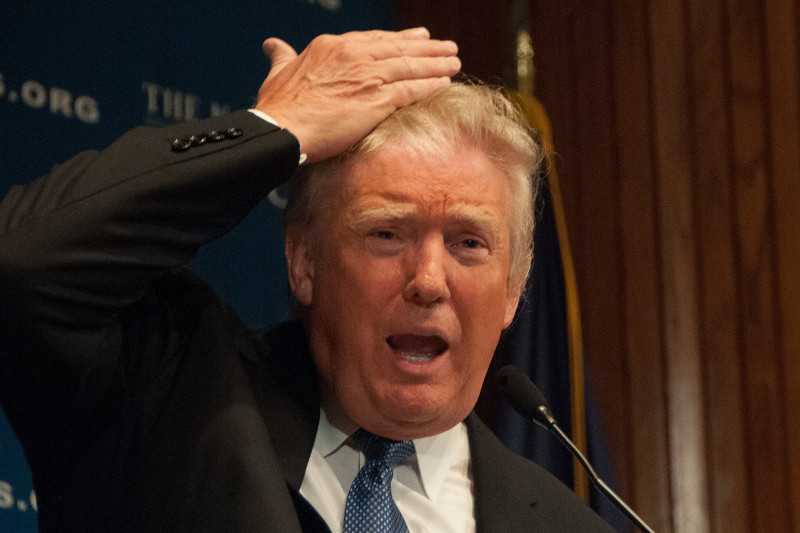Experts catch errors of Donald Trump's hair spray
US presidential candidate Donald Trump made an incomplete understanding of hair spray, an important product in his daily life.
In a speech on May 5 in West Virginia, Donald Trump voiced complaints about the product he still uses every day as hair spray . "People should not continue to use hairspray because this product affects the ozone layer. Hair spray today is no longer the same as before. It was really good," Trump said.
However, according to Steven Maguire, researcher at SNOLAB, an underground physical facility in Ontario, Canada, hair sprays are now much less harmful than hairspray in the past, because of modern products. Does not contain chlorofluorocarbon or CFC.
The CFC molecule consists of a chain of carbon atoms attached to chlorine and fluorine atoms, which act as agents for liquid hair spray to spray out the vial and disperse into the air. In other words, hair spray is actually just a liquid.

Donal Trump - US presidential candidate has not fully understood the hair spray.(Photo: Albert H. Teich).
CFC compounds were first developed in the 1930s. At that time, scientists thought that CFC did not react with any other compound. They speculated that this was inert. Centuries later, researchers found that CFC reacts with ozone molecules.
Ozone is made up of three oxygen atoms linked together, which is the main component of a layer in the Earth's stratosphere, several kilometers from the ground. The ozone layer plays an important role in the weather on the planet by absorbing most of the sun's ultraviolet rays, shielding the Earth against this toxic ray.
When CFC molecules fly up the stratosphere, they react with ultraviolet light, leading to a chlorine atom being separated from the CFC molecule and reacting with the ozone layer, causing the ozone molecule to split. After that, the chlorine atom continued to float, breaking apart many other ozone molecules.
The more CFC molecules fly into the atmosphere, the more ozone is eroded. When CFC is used in products, ozone fractionation rates are higher than forming rates.
The researchers discovered the problem in the 1970s and the use of CFC was eliminated. In 1987, the United Nations signed the Montreal Protocol, calling for the promotion of CFC cuts in consumer products.
CFC in hairspray is replaced with hydrochlorofluorocarbon or HCFC , according to Maguire. Instead of containing only chlorine and fluorine and carbon sequences, the HCFC molecule has an additional hydrogen atom. HCFC also works to push hair spray solution out of the bottle like CFC. Unlike CFC molecules that can split many ozone molecules, if the HCFC molecule flies up to the upper layer, they only break down one ozone molecule and then stop.
- Beijing's smog mist returned because people used perfume and hair spray gel?
- Why is gum used to shape hairstyles?
- Hello, messy hair
- 50 The incredible truth about hair
- Why silver hair back?
- Spray condom coming soon
- The cure for silver hair does not require dyeing
- Pandemic hair is about to explode when 98% of lice are resistant
- Why do dirty hair get better?
- The concept of women possessing naturally curly hair is very difficult, is this true?
- You won't see a toilet spray when you arrive in the US - why?
- Caffeine is the first ... spray in the world
 Is the magnetic North Pole shift dangerous to humanity?
Is the magnetic North Pole shift dangerous to humanity? Washington legalizes the recycling of human bodies into fertilizer
Washington legalizes the recycling of human bodies into fertilizer Lightning stone - the mysterious guest
Lightning stone - the mysterious guest Stunned by the mysterious sunset, strange appearance
Stunned by the mysterious sunset, strange appearance